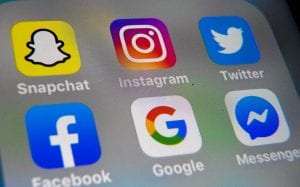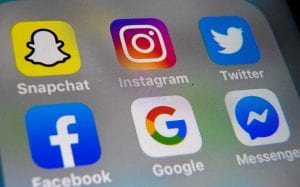In a year unlike any other due to COVID-19, who can you trust when it comes to real-time information regarding a global pandemic?

For those on Twitter and other social media platforms, University of Florida Urban and Regional Planning Assistant Professor Dr. Yan Wang and Interior Design Assistant Professor Dr. Lisa Platt are working on the answer. Wang and Platt, who both represent the Florida Institute for Built Environment Resilience (FIBER), are the principal investigators of the Rapid Response Research (RAPID) project. RAPID launched June 1 with an investigation into how the leveraging of credible information on Twitter in the United States during the COVID-19 pandemic suppresses misinformation and can moderate its adverse consequences.
“Extreme events can trigger a higher-than-usual quantity of rumors and conversations on social media,” said Wang, who received the funding for RAPID from the National Science Foundation’s Division of Civil, Mechanical and Manufacturing Innovation (CMMI). “The scale and negative impact of incongruent risk communication and misinformation during COVID-19 is unprecedented. The public has struggled to understand the virus due to conflicting information from multiple sources.”

The study is important because to stop the spread of COVID-19 during a worldwide health crisis, health agencies must ensure that most of the information available on Twitter is correct, credible, and based in science. Unfortunately, the bar for various persons sharing health information on social media platforms is low in terms of parameters and credentials. Additionally, with epidemiologists learning new things daily about the disease in terms of infection prevention safety information, it is commonplace for medical guidance and safety measures to change daily, if not hourly.
“So far, an interesting phenomenon has been the quantity of COVID-19 content regarding health, safety, and welfare on Twitter appears to have escalated and then plateaued after a period of a few months,” Wang said. “It is too early in the study and the pandemic to understand if this diffusion level of twitter messaging related to COVID-19 is truly the maximum carrying capacity for information dissemination.”
With five years of studying social media’s role in disaster resilience, Wang has seen many hot-button issues come and go when it comes to people’s sentiment during extreme events. Among the debated issues during this year’s pandemic has been the use of masks as a preventive measure in eliminating the distribution of the virus.
“At the beginning of COVID-19, people wrestled with the idea of wearing masks because of the many different suggestions from public health agencies, other governmental stakeholders, and the public,” Wang said. “As a result of this, the general public living in the U.S. has lacked faith and the topic of wearing a mask has become fodder for misinformation.”

For Platt, who has worked in and around healthcare for three decades, there has never been a time to be more conscious of misinformation about a major public health event being spread as there is during this global pandemic.
“Even when very smart humans are faced with a disease that can irrevocably alter their lives or kill them, they may have a tendency to recall information they find most compelling or memorable, even if it is blatantly false,” Platt said. “Personally speaking, I had a well-educated friend of mine ask me recently about the validity of misinformation regarding a healthcare practice for treating COVID-19 patients. It was too incredible to be believed.”
With an estimated end date of May 2021, the project has two important goals for Wang and Platt. First, they must thoroughly understand the relationships between legitimate pandemic safety communication being shared by U.S. scientific and government agencies, and inconsistent or incorrect health information regarding COVID-19 being shared and distributed on Twitter. Secondly, RAPID will diagnose and document which of the two types of tweeted information, fact or fiction, is being retweeted and diffused more broadly throughout Twitter.
Regardless of the results, thanks to a group of UF faculty members, the world will have a better understanding of the tangled web that is the factual dissemination of information on social media.
This story was originally posted on UF DCP.
Check out more stories about UF research on COVID-19.

